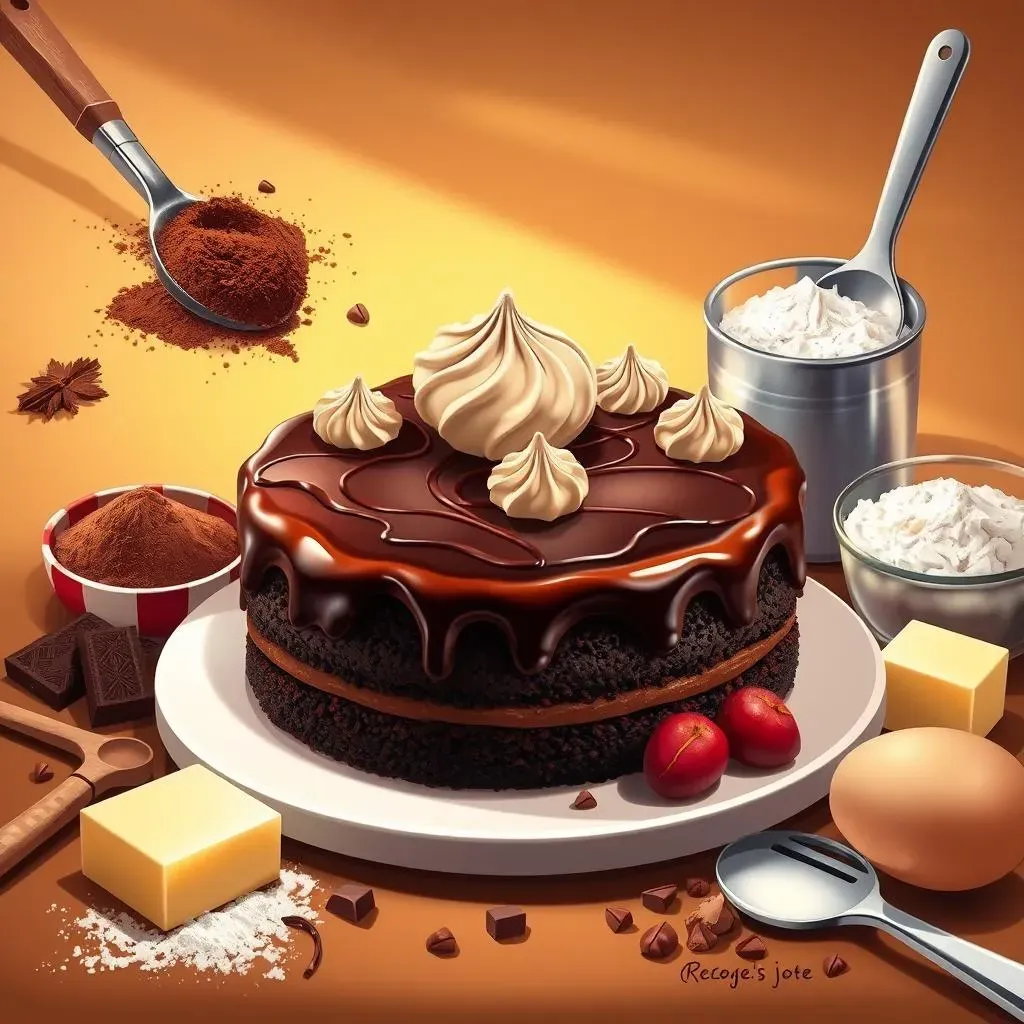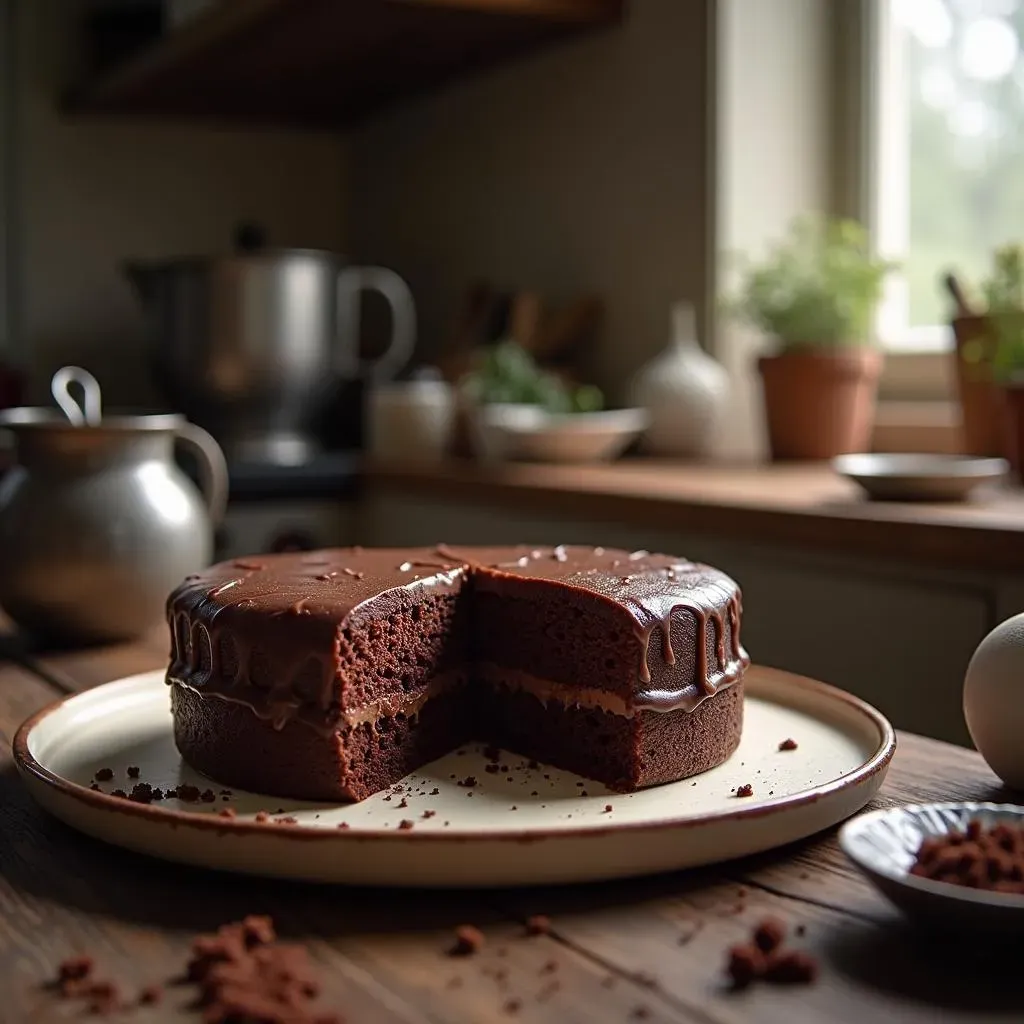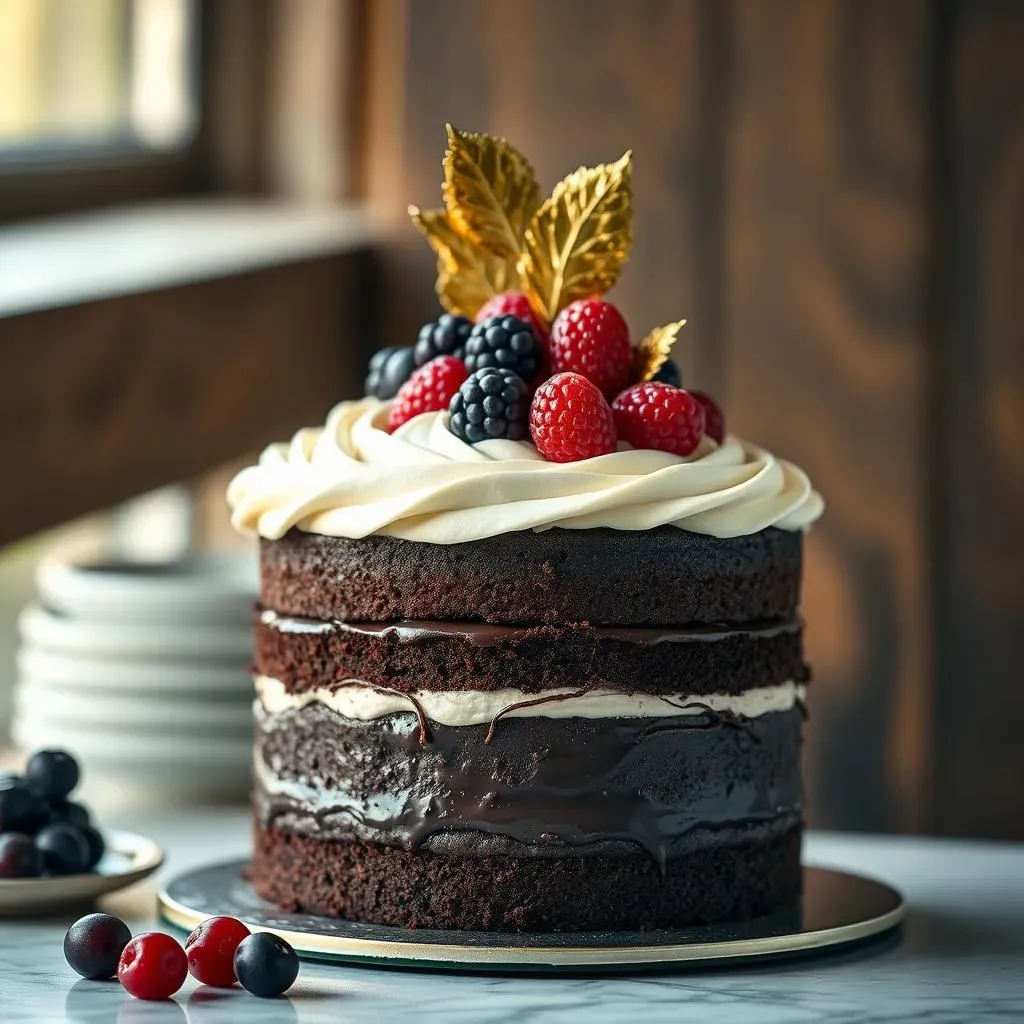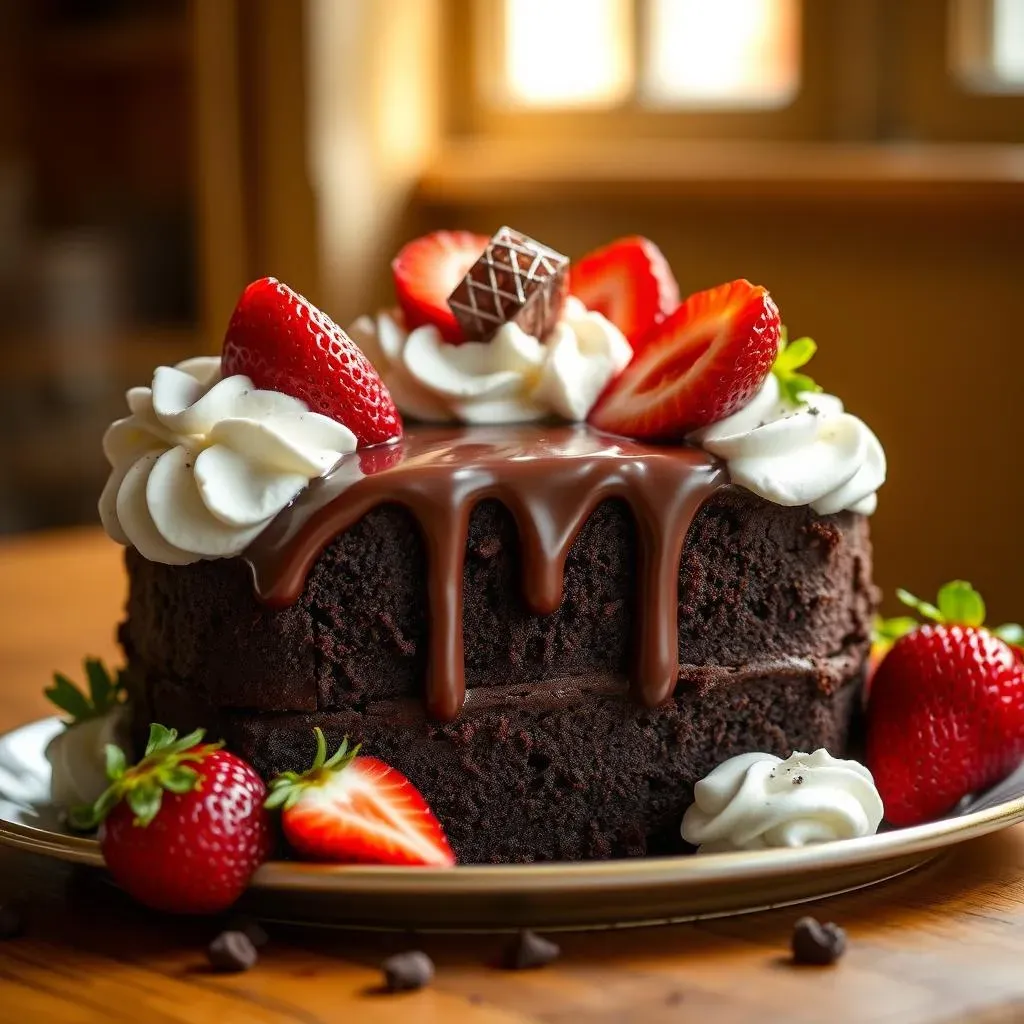Table of Contents
Ever wondered what makes one fudge chocolate cake better than another? Is it the cocoa powder? The baking method? Or maybe the magic lies in the frosting? This article is your guide through the delicious world of comparing fudge chocolate cake recipes. We'll be taking a closer look at the key ingredients that determine the texture and taste of your final masterpiece, exploring different baking methods to achieve that perfect fudgy consistency, and finally, pitting the classic ganache against the creamy buttercream in a frosting face-off. Get ready for a mouthwatering journey as we uncover the secrets to baking the ultimate fudge chocolate cake. We'll dissect recipes, analyze techniques, and ultimately crown a champion in our ultimate taste test. So, grab your apron, preheat your oven, and let's embark on this delectable adventure of comparing fudge chocolate cake recipes together! Prepare to be amazed by the subtle differences that can create a world of flavor variations. By the end, you’ll be a fudge chocolate cake connoisseur, able to pick the perfect recipe for your next baking project, whether it’s a simple weeknight treat or a show-stopping dessert for a special occasion. Let's get baking!
Key Ingredients and Their Impact

Key Ingredients and Their Impact
The Chocolate Conundrum: Cocoa and Beyond
Let's talk chocolate! The type of chocolate you use—dark, semi-sweet, milk—dramatically impacts the final flavor profile. Dark chocolate delivers intense bitterness and richness, while milk chocolate offers a sweeter, milder taste. For a truly decadent experience, many recipes call for a combination of both cocoa powder and melted chocolate, layering the intensity. Think of it as an orchestra – each instrument (type of chocolate) contributes to the overall harmony. A good quality cocoa powder is key; Dutch-processed cocoa powder has a smoother, less acidic taste than natural cocoa powder, leading to a richer, more velvety texture. Check out our guide on making fudge chocolate cake from scratch for more insights into selecting the best chocolate for your needs.
Don't underestimate the power of the supporting players! The ratio of sugar to flour affects the cake's moisture and density. Too much sugar, and you risk a cake that's overly sweet and crumbly. Too little, and the cake might be dry and less flavorful. The type of flour also plays a significant role; cake flour, with its lower protein content, creates a more tender crumb than all-purpose flour. Experimenting with different flours can lead to fascinating results. For instance, using a blend of cake flour and all-purpose flour can balance tenderness and structure. A recipe that uses moist fudge chocolate cake might have a different balance of ingredients.
Ingredient | Impact on Cake |
|---|---|
Dark Chocolate | Intense, bitter flavor |
Milk Chocolate | Sweeter, milder flavor |
Cocoa Powder (Dutch-processed) | Smoother, less acidic taste |
Sugar | Sweetness and moisture |
Flour (Cake flour) | Tender crumb |
Beyond the Basics: Fats, Liquids, and Leavening Agents
Fats, such as butter or oil, contribute significantly to the cake's moistness and richness. Butter adds a distinct flavor and creates a more tender crumb, while oil yields a moister cake with a slightly different texture. The choice often depends on personal preference. Some recipes even incorporate both for the best of both worlds! Liquids, such as milk, buttermilk, or even coffee, add moisture and enhance the chocolate flavor. Buttermilk, with its acidity, can react with the baking soda, creating a slightly tangy flavor and a lighter texture. Coffee, on the other hand, amplifies the chocolate flavor, making it more pronounced and complex. For example, a recipe using fudgey chocolate cake might call for buttermilk, while another might use coffee.
Leavening agents, such as baking powder and baking soda, are crucial for creating a light and airy texture. The type and amount of leavening agent used influence the rise and overall structure of the cake. Baking powder provides a consistent rise, while baking soda reacts with acidic ingredients to create carbon dioxide bubbles. Using baking soda without enough acid will lead to a flat cake, while using too much baking powder can give it a slightly bitter aftertaste. Understanding the interplay between these elements is crucial to achieving that perfect fudgy texture. Explore our FAQ page for answers to commonly asked questions about fudge cake baking.
- Butter: Rich flavor, tender crumb
- Oil: Moist texture
- Milk: Adds moisture
- Buttermilk: Tangy flavor, lighter texture
- Coffee: Enhances chocolate flavor
- Baking Powder: Consistent rise
- Baking Soda: Reacts with acids
Baking Methods: From Oven to Pan

Baking Methods: From Oven to Pan
Oven Baking: The Classic Approach
Most fudge chocolate cake recipes rely on the trusty oven. The even heat distribution ensures consistent baking, leading to a beautifully textured cake. However, oven temperatures can vary, so using an oven thermometer is a smart move. Baking times also depend on your oven and the size of your pan. A smaller pan will bake faster than a larger one. A good rule of thumb is to check for doneness with a toothpick inserted into the center; it should come out with just a few moist crumbs attached. Overbaking can lead to a dry cake, while underbaking results in a gooey mess. For tips on troubleshooting, check out our guide on troubleshooting fudge cake problems.
Many recipes recommend using multiple smaller pans, resulting in thinner layers that bake more evenly. This method also makes it easier to layer and frost the cake. However, using one larger pan can be faster and simplifies cleanup. This choice depends on personal preference and the specific recipe. For a truly decadent experience, consider using a fudge chocolate cake with ganache for an extra layer of richness. The key is to follow the recipe instructions carefully and adapt as needed based on your oven's quirks.
- Use an oven thermometer for accuracy.
- Check for doneness with a toothpick.
- Smaller pans bake faster.
- Consider using multiple smaller pans for even baking.
Alternative Baking Methods: Exploring Other Options
While oven baking is the most common method, other approaches can yield interesting results. A slow cooker, for instance, offers a gentle, even heat, potentially leading to a moister cake. However, it requires more time and careful monitoring. This method might be ideal for recipes that call for a particularly moist and dense cake. For those short on time, consider a microwave method. Many recipes are designed for quick baking in the microwave, perfect for satisfying a sudden chocolate craving. However, this method might not yield the same texture as oven-baked cakes. If you're looking for a truly unique experience, try baking your fudge cake in a bundt pan for an elegant presentation. Check out our fudge chocolate cake variations page for more creative baking ideas.
Remember, regardless of the method you choose, always read the instructions carefully and adjust baking times based on your equipment and the recipe's specifics. Each method has its own set of benefits and drawbacks. Experimenting with different methods is a great way to learn and discover your preferred technique. For more in-depth information and tips, you might find our fudge chocolate cake reviews helpful, as they often include user experiences with different baking methods.
Baking Method | Pros | Cons |
|---|---|---|
Oven | Even heat, consistent results | Requires time, can be temperamental |
Slow Cooker | Gentle heat, moist cake | Requires longer baking time, needs monitoring |
Microwave | Fast and convenient | May not yield same texture as oven-baked cakes |
Frosting FaceOff: Ganache vs. Buttercream

Frosting FaceOff: Ganache vs. Buttercream
Ganache: The Rich and Decadent Choice
Ah, ganache—the epitome of chocolate indulgence. This luscious frosting, made simply from chocolate and cream, offers an intensely rich, intensely chocolatey experience. The texture varies depending on the ratio of chocolate to cream; a higher chocolate ratio results in a thicker, more intensely flavored ganache, perfect for a truly decadent cake. A lower ratio yields a smoother, pourable ganache, ideal for drizzling or creating a glossy finish. The simplicity of ganache is part of its appeal; it's quick to make and requires minimal ingredients. The dark, intense flavor complements the fudgy texture of the cake beautifully. For a recipe that truly showcases ganache's potential, check out our fudge chocolate cake with ganache recipe.
One thing to keep in mind with ganache is its temperature sensitivity. It needs to cool slightly before it can be spread effectively. If it's too warm, it will be too runny; if it's too cold, it can become difficult to spread smoothly. A double boiler or microwave can be used to melt the chocolate, ensuring a smooth and even texture without scorching the chocolate. Experimenting with different types of chocolate can yield interesting variations in flavor and texture. For instance, using dark chocolate creates a more intense, bitter ganache, while milk chocolate produces a sweeter, creamier result. Our fudge cake variations page offers more creative ideas for ganache.
Ganache Ratio | Texture | Application |
|---|---|---|
High Chocolate | Thick | Frosting |
Low Chocolate | Pourable | Drizzling, Glaze |
Buttercream: The Classic and Versatile Option
Buttercream, a long-standing favorite, offers a lighter, fluffier texture compared to the intense richness of ganache. Its versatility is a major advantage; you can easily customize it by adding different flavors, colors, or extracts. A classic American buttercream, made with butter, powdered sugar, and flavorings, is a popular choice for its ease of use and creamy texture. Its sweetness complements the fudgy cake beautifully, offering a delightful contrast in texture and flavor. It’s easy to pipe, making it ideal for creating decorative designs. For a recipe showcasing buttercream's versatility, try our fudge chocolate cake with frosting recipe.
However, buttercream's lighter texture can sometimes feel less intense than ganache, particularly when paired with a rich, fudgy cake. The sweetness can also be overpowering for some palates. Different types of buttercream, such as Swiss meringue buttercream or Italian meringue buttercream, offer unique textures and flavors. Swiss meringue buttercream, for instance, is known for its smooth, silky texture, while Italian meringue buttercream boasts a glossy finish. The choice often comes down to personal preference and the desired level of sweetness and texture. For a delicious combination, consider adding chocolate chips or cocoa powder to your buttercream to enhance its chocolatey flavor. For tips and tricks on achieving the perfect buttercream, check out our FAQ section on frosting.
- American Buttercream: Easy to make, creamy texture
- Swiss Meringue Buttercream: Smooth, silky texture
- Italian Meringue Buttercream: Glossy finish
The Ultimate Fudge Chocolate Cake Showdown: Taste Test and Verdict

The Ultimate Fudge Chocolate Cake Showdown: Taste Test and Verdict
The Great Bake-Off
Okay, so we've explored ingredients, baking methods, and frostings. Now for the moment of truth: the taste test! I enlisted a panel of expert tasters (my family, mostly – they're surprisingly discerning when it comes to cake). We sampled three different fudge cakes, each made with variations in the recipes we’ve discussed. One was a classic oven-baked cake with a rich ganache, another was a slow-cooker creation boasting a decadent buttercream, and the last was a surprisingly good microwave cake with a simple chocolate glaze. Each cake was judged on its texture, flavor, and overall presentation. We even had a blind taste test to eliminate any bias. You can see the full details of the recipes we used on our comparing fudge chocolate cake recipes page.
The results were, shall we say, interesting. The oven-baked cake was a clear favorite for its even texture and intensely rich chocolate flavor. The ganache was a perfect complement, providing a luxurious contrast in texture. The slow cooker cake was surprisingly moist, but the buttercream, while delicious, was a bit too sweet for some palates. The microwave cake was a revelation; it was surprisingly moist and fudgy, proving that quick baking doesn’t always mean sacrificing quality. You might also be interested in our best fudge chocolate cake recipe post, which includes reader reviews and feedback.
- Oven-baked: Even texture, rich chocolate flavor
- Slow cooker: Moist, but overly sweet buttercream
- Microwave: Surprisingly moist and fudgy
The Verdict
So, which cake reigned supreme? While personal preferences certainly played a role (my niece had a serious thing for the microwave cake!), the oven-baked cake with the ganache won by a landslide. It achieved the perfect balance of moistness, richness, and intense chocolate flavor. The ganache was the perfect finishing touch, enhancing the cake's decadent nature. However, the other two cakes also had their merits, proving that there's more than one way to bake a delicious fudge chocolate cake. This highlights the importance of understanding the nuances of each ingredient and technique to achieve the desired outcome.
Ultimately, the "best" fudge chocolate cake is subjective. What one person considers the perfect balance of sweetness, richness, and texture, another might find too intense or too subtle. The fun part is experimenting and discovering your own preferences! Don’t be afraid to tweak recipes, explore different ingredients, and try out various baking methods. Our fudge chocolate cake variations page is full of ideas to get you started. The journey of discovering your perfect fudge chocolate cake is just as rewarding as the delicious result.
Cake Type | Texture | Flavor | Overall Score |
|---|---|---|---|
Oven-baked (Ganache) | Even, moist | Intensely chocolatey | 9/10 |
Slow Cooker (Buttercream) | Moist | Sweet, creamy | 7/10 |
Microwave (Glaze) | Moist, fudgy | Good chocolate flavor | 8/10 |
